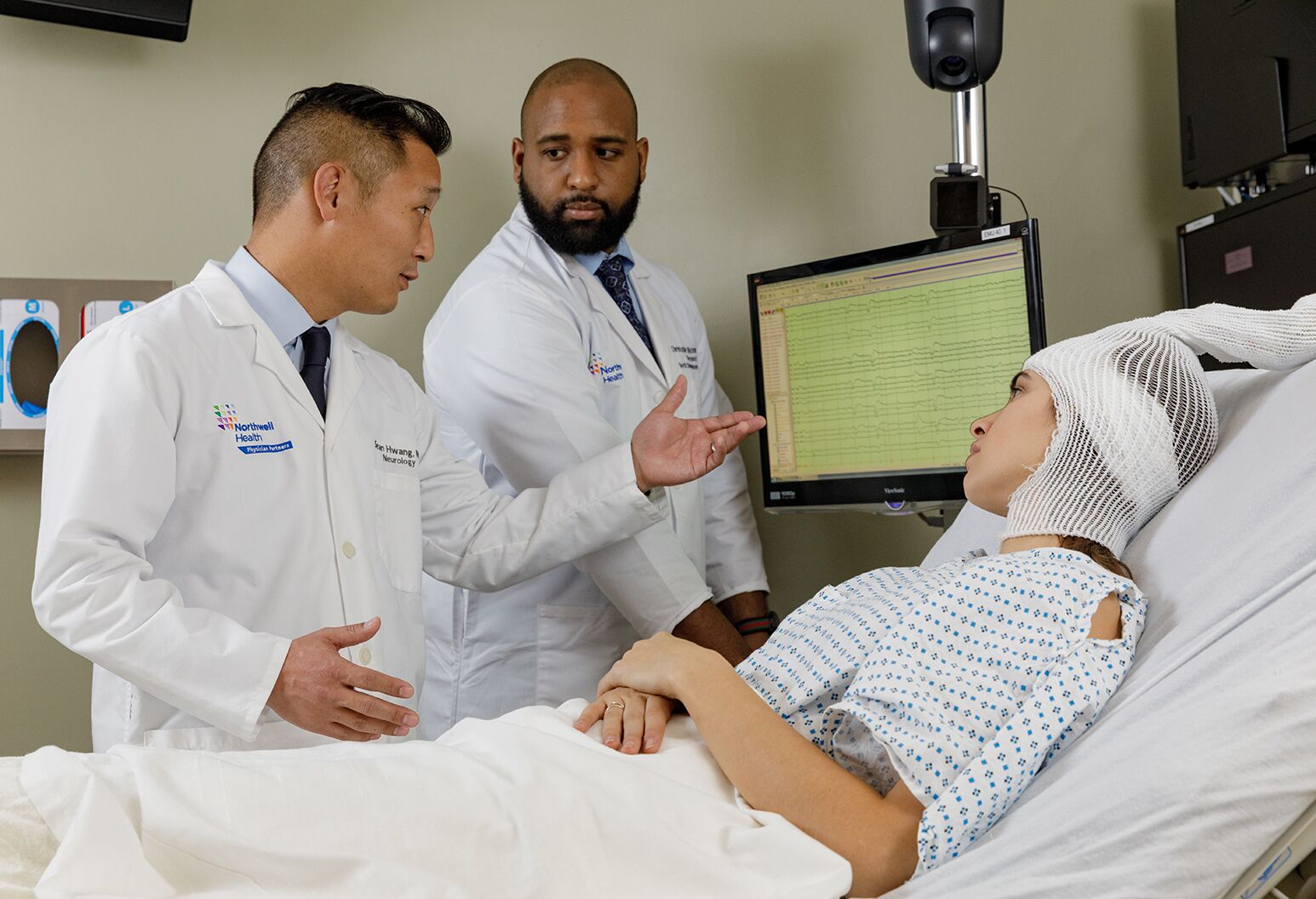Neurostimulator treatment for epilepsy
What is neurostimulator treatment for epilepsy?
Neurostimulator treatment is a type of surgery that uses small, implantable, battery-powered “pacemaker-like” devices that are currently available to either stimulate the vagus nerve (the cranial nerve originating in the brain that travels in the neck to the rest of the body) or to directly stimulate the brain regions triggering seizures.
Types of neurostimulators
Vagus nerve stimulator (VNS)
This device stimulates the vagus nerve at intervals of a few minutes to reduce the frequency and strength of seizures. Individuals with the VNS device can also activate the VNS stimulation noninvasively by using a magnet that is provided at the time the device is placed. The strength of stimulation is gradually adjusted by the physician during office visits by using a programming wand that communicates wirelessly with the stimulator. The VNS stimulator battery and pacemaker unit are implanted under the skin in the chest and the stimulation lead is connected to the vagus nerve as it travels through the neck.
Responsive neurostimulation system (RNS)
This device works by continuously analyzing brain activity to detect a seizure and delivering stimulation whenever a seizure is detected. By applying stimulation at the beginning of the seizure, the RNS device attempts to block the seizure from progressing to where it produces symptoms. The RNS battery and pacemaker unit are implanted in the bone of the skull and the stimulation leads travel from the unit to the brain region, triggering seizures.
Risks
VNS and RNS neurostimulator treatments are both considered safe and effective with minimal risks and side effects.
For VNS, risks include cough or hoarseness, usually eliminated by adjusting the stimulation intensity. For RNS, which involves placing the stimulation leads in the brain, similar to the approach used for deep brain stimulation for Parkinson's disease, the risks include leakage of cerebrospinal fluid.
For both devices, as with any surgery, there is also a risk of:
- Allergic reaction to the device
- Infection
- Temporary pain or swelling at the implantation site
- Temporary tingling of the face, arms or legs
In a small percentage of individuals, the VNS or RNS stimulation lead or battery device can break or shift. In these cases, the device will need to be removed and replaced.
What to expect after treatment
After neurostimulator treatment, you will stay in the hospital for several days. You may be prescribed antibiotics to prevent infection. Post-surgery, you will need to return to your doctor’s office for a follow-up visit. During this visit, the stimulator will be turned on and programmed to provide the specific level of stimulation you require.
Most people who have neurostimulator treatment have a significant improvement in symptoms and an improved quality of life. However, you may still require medication to manage some symptoms, such as seizures.
Our Epilepsy Center offers comprehensive inpatient and outpatient epilepsy services designed to improve the lives of patients and their families dealing with epilepsy and related disorders.

